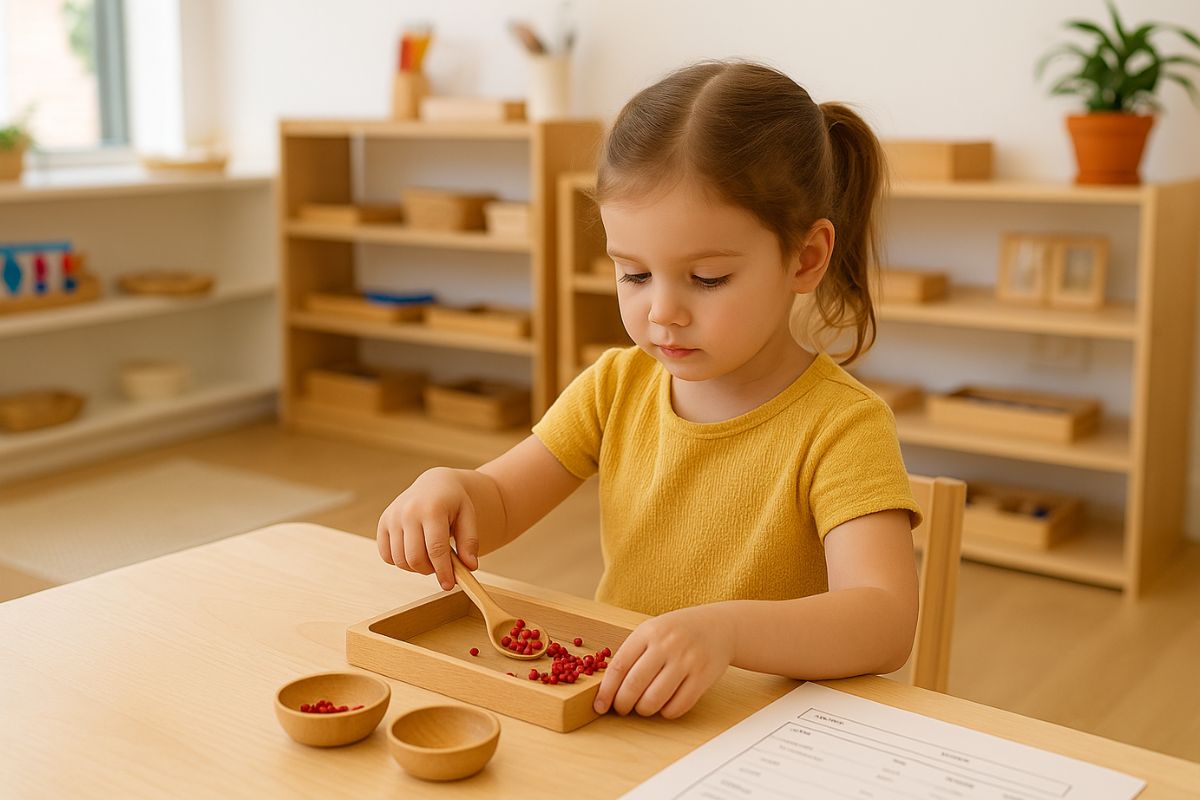Step into a Montessori classroom, and one of the first things you’ll notice is the quiet confidence of the children. They’re not waiting for instructions. They’re not lined up for the next activity. Instead, they’re choosing their own work, moving freely, and engaging deeply—all without needing constant adult direction.
This isn’t accidental. It’s a direct result of the Montessori method’s focus on independence. From the very beginning, children are encouraged to do for themselves what they are capable of doing. That choice is deliberate, and it changes everything—from how they learn to how they see themselves in the world.
Why Independence Matters in Montessori Education
This article explores how Montessori education nurtures independence and why it plays a critical role in a child’s growth. It discusses the link between freedom and responsibility, how prepared environments foster autonomy, and how independence supports lifelong learning.
Building Independence from the Start
Dr. Maria Montessori believed that independence begins in early childhood and must be supported—not controlled—by adults. Children have a natural drive to do things for themselves, from tying shoes to pouring water. When adults step back at the right time, children not only learn the skill but develop confidence and self-respect.
Montessori classrooms are designed to honor that process. Children learn how to care for themselves and their environment. They prepare their snacks, clean up after themselves, and make meaningful choices throughout the day.
These tasks might seem small, but they’re powerful. They send a message: You are capable. You are trusted. You can choose, and you can succeed.
The Prepared Environment and Freedom Within Limits
A Montessori classroom is carefully arranged to support independent learning. Materials are placed on low shelves, within easy reach of children. Each material is self-correcting, allowing the child to see mistakes and try again without needing constant adult intervention.
Freedom doesn’t mean chaos. Children are free to choose, but only within the boundaries of respect—for themselves, others, and the space. That balance between freedom and responsibility is what makes independence meaningful.
Over time, this leads to deep engagement. When children feel ownership over their choices, they take their work seriously. They don’t need external rewards. The act of doing the work becomes rewarding in itself.
Independence Supports Executive Function
Executive function skills—like planning, problem-solving, and self-regulation—are essential for long-term success. In Montessori settings, these skills are built naturally through daily experience.
A child choosing their own activity, sticking with it, and putting it away when finished is practicing decision-making. A child figuring out how to solve a puzzle or build a tower is developing focus and adaptability.
Because these skills are not taught in isolation but through real-life tasks, they become part of the child’s thinking process. Independence doesn’t just teach practical tasks—it shapes how the brain develops and functions.
The Role of the Adult: Guide, Not Boss
In traditional classrooms, the teacher often leads, instructs, and manages every moment. In Montessori classrooms, the adult is called a guide—and that title reflects a different relationship.
The guide observes each child’s progress and steps in only when necessary. They show how to use materials, offer encouragement, and ensure the classroom is running smoothly. But they don’t dominate the space.
This allows children to take initiative. When children aren’t dependent on adult approval for every action, they learn to trust themselves. They begin to see adults not as authority figures who control them, but as respectful supporters of their growth.
Responsibility Grows Alongside Freedom
A common misconception is that independence means a child is left alone. But in Montessori education, independence is deeply connected to responsibility. Children learn that their actions have impact. If they spill something, they clean it up. If they want to use a material, they wait their turn.
These daily experiences shape a sense of accountability. Children learn to respect shared spaces, collaborate with others, and care for things that aren’t theirs. Because they’re given real freedom, they learn what it means to use it wisely.
This balance between autonomy and responsibility prepares children not just for school, but for life.
Social and Emotional Growth Through Independence
Independence isn’t just about tasks—it’s about identity. When children are trusted to make choices, solve problems, and navigate their day, they build a strong sense of self.
This helps with emotional regulation. A child who feels competent is more likely to manage frustration. A child who knows they can find a solution is less likely to give up.
It also supports empathy. When children are confident in themselves, they can be more generous with others. They don’t need to compete for attention or approval. They see their classmates not as rivals but as collaborators in a shared space.
Independence Looks Different at Every Age
Montessori classrooms are multi-age for a reason. A three-year-old and a five-year-old are working on different skills, but both are developing independence in ways that make sense for them.
A toddler might be learning to put on their shoes. An elementary child might be planning a research project. An adolescent might be managing a group task or leading a community discussion.
At every stage, independence is supported with care. Children aren’t pushed into it—they’re invited into it. They’re trusted to grow at their own pace, with guidance when needed.
Trust as the Foundation
The heart of Montessori independence is trust. Trust that children want to learn. Trust that they are capable. Trust that with the right support, they will rise to meet challenges.
When we offer that trust, we give children a gift that extends far beyond the classroom. We teach them that they don’t need to wait for permission to think, to act, to grow. They learn that they can begin now—with their own hands, their own choices, and their own voice.
That’s the kind of independence that lasts.
